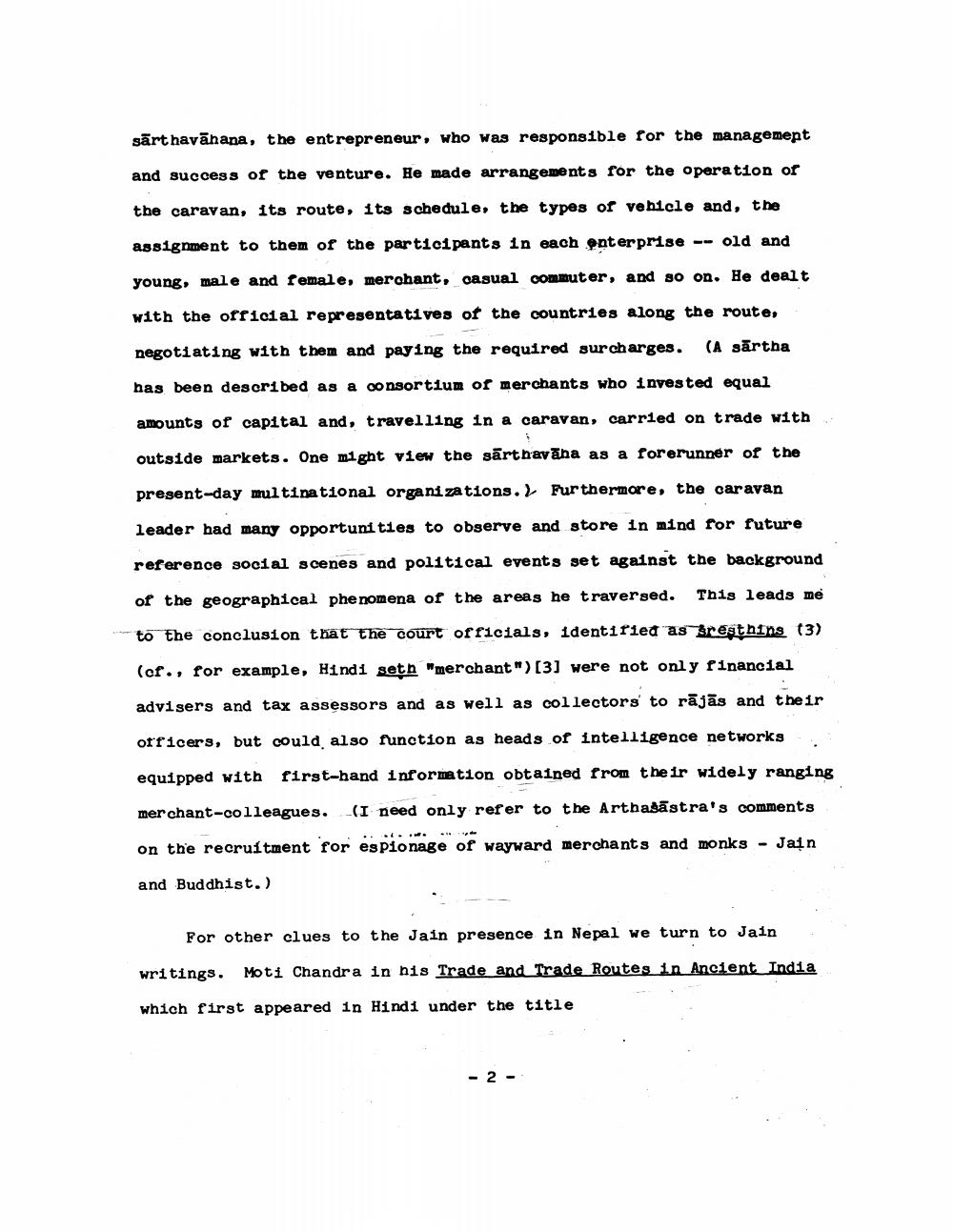Book Title: Jain Presence In Nepal Author(s): Ernest Bender Publisher: Ernest Bender View full book textPage 2
________________ sārt havāhana, the entrepreneur, who was responsible for the management and success of the venture. He made arrangements for the operation of the caravan, its route, its schedule, the types of vehicle and, the assignment to them of the participants in each onterprise -- old and young, male and female, merchant, casual commuter, and so on. He dealt with the official representatives of the countries along the route, negotiating with them and paying the required surcharges. (A sārtha has been described as a consortium of merchants who invested equal amounts of capital and, travelling in a caravan, carried on trade with outside markets. One might view the sārthavana as a forerunner of the present-day multinational organizations. Furthermore, the caravan leader had many opportunities to observe and store in mind for future reference social scenes and political events set against the background of the geographical phenomena of the areas he traversed. This leads me to the conclusion that the court officials, identified as Breathing (3) (cf., for example, Hindi seth "merchant")[3] were not only financial advisers and tax assessors and as well as collectors to rājās and their officers, but could also function as heads of intelligence networks. equipped with first-hand information obtained from their widely ranging merchant-colleagues. (I need only refer to the Arthasāstra's comments on the recruitment for espionage of wayward merchants and monks - Jain and Buddhist.) Por other clues to the Jain presence in Nepal we turn to Jain writings. Moti Chandra in his Trade and Trade Routes in Ancient India which first appeared in Hindi under the title - 2 -Page Navigation
1 2 3 4 5 6 7 8 9 10 11
